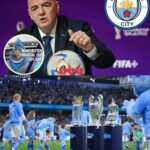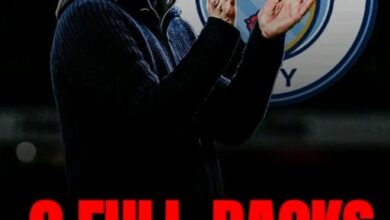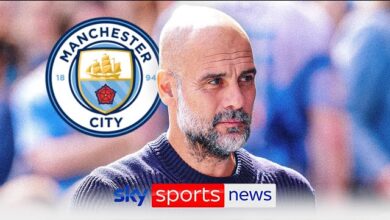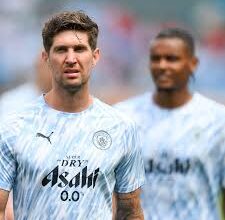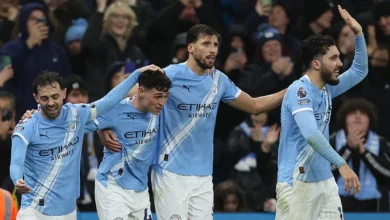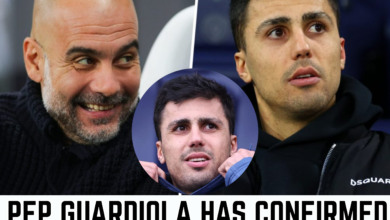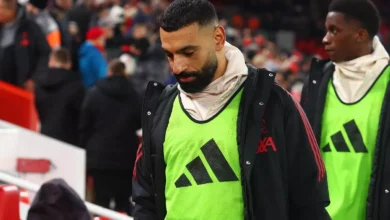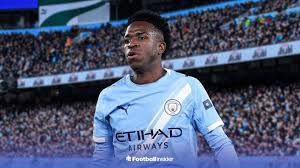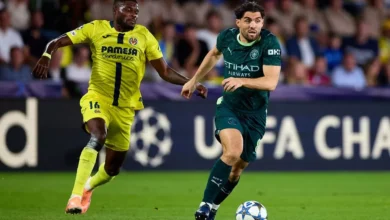The Story Behind Manchester City’s Fourth Kit: Why Premier League Rules Mean It’s Reserved for European Glory
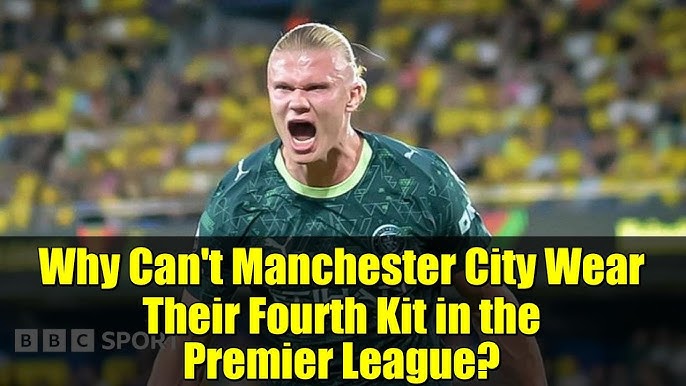
In the world of modern football, club kits have evolved far beyond their traditional role as simple team uniforms. They have become powerful marketing tools, cultural statements, and sources of significant revenue for clubs around the globe. Manchester City’s recent unveiling of their innovative green fourth kit during their Champions League clash against Villarreal on Tuesday perfectly illustrates this evolution, while simultaneously highlighting the complex regulations governing kit usage across different competitions. This fascinating intersection of sport, commerce, and administrative rules reveals much about how football operates in the contemporary era.
The Premier League’s Strict Three-Kit Rule
The most striking aspect of Manchester City’s new fourth kit is not its eye-catching design or its gaming-inspired theme, but rather where it cannot be worn. Despite being officially part of City’s kit collection for the season, Pep Guardiola’s squad will be unable to showcase this particular strip in any Premier League fixture. The reason lies in regulations established by English football’s top flight that limit clubs to a maximum of three different kits during any single league campaign.
This three-kit restriction—comprising the traditional home, away, and third strips—has been a longstanding feature of Premier League regulations. The rule exists primarily to maintain clarity for supporters, broadcasters, and match officials, while also preventing the excessive commercialization that could arise from unlimited kit releases. In an era where clubs are constantly seeking new revenue streams, the Premier League’s position represents a deliberate attempt to balance commercial interests with the traditional aspects of the sport and practical considerations.
For Manchester City, this means their striking new green kit, despite its innovative features and undoubtedly significant investment in design and production, will remain absent from English league football throughout the season. The kit will not grace the pitches of Old Trafford, Anfield, the Emirates, or any other Premier League venue, regardless of potential kit clashes or any other circumstances that might otherwise warrant its use.
Champions League Freedom: Where the Fourth Kit Thrives
In stark contrast to the Premier League’s restrictive approach, UEFA’s Champions League operates without such limitations on the number of kits clubs can register and wear during their European campaigns. This regulatory difference creates an interesting dynamic where certain kits become exclusively associated with European competition, potentially adding to their mystique and appeal among supporters.
Manchester City can freely wear their new fourth kit throughout the remainder of their Champions League journey this season. This means fans attending European fixtures at the Etihad Stadium or traveling supporters following the team across the continent might witness matches played in this exclusive strip. The kit could potentially become associated with memorable European nights, creating a unique subset of Manchester City’s rich visual history.
The absence of kit number restrictions in the Champions League reflects UEFA’s different approach to competition management compared to domestic leagues. While the Premier League prioritizes uniformity and limitation, UEFA appears more relaxed about allowing clubs to express themselves through varied kit designs, perhaps recognizing that the commercial realities of modern football require greater flexibility, particularly in a competition that generates enormous revenue and global attention.
The FA Cup Exception: Navigating Special Circumstances
The regulations surrounding kit usage become even more nuanced when considering the FA Cup, England’s historic knockout competition. Manchester City can potentially wear their fourth kit in FA Cup fixtures, but not automatically. The club must submit a formal application to the Football Association, accompanied by a compelling reason for requesting permission to use an additional strip beyond their standard three.
This application-based system creates an interesting precedent and reveals the FA’s willingness to accommodate special circumstances while maintaining overall control over kit proliferation. The system acknowledges that there may be legitimate reasons for clubs to want to wear additional kits beyond commercial motivations alone.
The most prominent recent example of this exception being granted involved Arsenal, who received permission to wear a special white fourth strip in FA Cup competition. However, this wasn’t simply a commercial exercise or aesthetic choice—Arsenal’s application was approved specifically because the kit formed part of their campaign to combat youth knife crime in London. This demonstrates that the FA is willing to bend its regulations when kits serve a meaningful social purpose beyond football itself.
This precedent suggests that if Manchester City wanted to wear their gaming-inspired fourth kit in the FA Cup, they would need to present a similarly compelling case. Whether technological innovation and engagement with gaming culture would constitute sufficient justification remains uncertain, but the pathway exists for clubs willing to make the case.
Last Season’s Fourth Kit: The Oasis Connection
Manchester City’s release of fourth kits isn’t a new phenomenon. The club ventured into similar territory during the previous season with a special strip that carried significant cultural weight. That kit was co-designed by Noel Gallagher, the legendary musician and die-hard Manchester City supporter, as a tribute to the 30th anniversary of Oasis’ seminal 1994 album ‘Definitely Maybe’.
The connection between Oasis and Manchester City runs deep, reflecting the broader relationship between football clubs and local cultural identity. Oasis, perhaps the most iconic band to emerge from Manchester during the Britpop era, has always been closely associated with the city’s football clubs, with the Gallagher brothers’ allegiances being well documented. Creating a kit that honored this musical legacy represented more than just commerce—it was a celebration of Manchester’s cultural heritage.
This special fourth kit saw action in prestigious Champions League fixtures, with the men’s team wearing it against European giants Inter Milan and Paris St-Germain. The women’s team also sported the design in matches against Paris FC and Barcelona, demonstrating how special kits can unite different sections of a club’s playing operation. The kit’s association with high-profile European matches against historic opponents likely enhanced its appeal among supporters and collectors.
The Club World Cup: When Fourth Becomes Fifth
The complexity of Manchester City’s kit situation extended even further during the previous season. Beyond their fourth kit, the club actually deployed a fifth strip during the 2025 Club World Cup. This tournament, featuring the champions from each of FIFA’s continental confederations, operates under FIFA’s jurisdiction rather than UEFA’s or the Premier League’s, creating yet another set of regulations and possibilities.
The use of a fifth kit in this competition illustrates how the fragmented governance of modern football—with different bodies controlling different competitions—can lead to situations where clubs maintain substantial kit wardrobes to comply with various regulations and maximize commercial opportunities across different tournaments.
For Manchester City, competing in the Club World Cup represented a chance to claim global supremacy, and the special kit associated with this tournament became part of the narrative surrounding their pursuit of this prestigious prize. The willingness to create competition-specific strips demonstrates the financial resources available to elite clubs and the commercial importance they attach to major tournaments.
Women’s Football and Special Edition Kits
Manchester City’s kit strategy extends across both their men’s and women’s teams, reflecting the growing prominence and commercial significance of women’s football. During the 2023-24 season, the women’s side wore a Chinese New Year-inspired shirt in a League Cup victory against local rivals Manchester United, demonstrating how special edition kits can acknowledge diverse cultural celebrations and expand a club’s appeal to international audiences.
The use of culturally specific designs represents an interesting development in football kit design. Rather than simply creating variations of traditional club colors, these special editions actively engage with different cultural traditions and celebrations. For a club with Manchester City’s global ambitions and ownership structure, such initiatives make strategic sense, helping to build connections with supporters in key international markets.
The fact that this special kit was worn against Manchester United adds additional significance. Derby matches carry extra weight in terms of media attention and supporter engagement, making them ideal occasions for unveiling distinctive strips that will be widely photographed and discussed.
The European Example: Napoli’s Thirteen Kits
To understand just how restrictive the Premier League’s three-kit rule is, one need only look at practices in other European leagues. During the 2021-22 season, Italian club Napoli wore an extraordinary thirteen different strips, showcasing the dramatically different approach taken by Serie A compared to England’s top flight.
Napoli’s kit collection that season included novelty designs such as a Halloween-themed strip, alongside more meaningful tributes including four different shirts honoring Diego Maradona, the legendary Argentine footballer who achieved godlike status during his time at the club. The collection also featured four Europa League-specific kits, demonstrating how competition-specific designs have become commonplace in some European leagues.
This approach represents almost the polar opposite of the Premier League’s philosophy. While English football’s governing body seeks to limit kit proliferation, Napoli embraced it enthusiastically, treating each kit as an opportunity for creative expression, cultural commentary, or commercial exploitation depending on one’s perspective.
The contrast raises interesting questions about which approach better serves the interests of supporters, clubs, and the sport itself. Critics of excessive kit releases argue they represent cynical commercialization, pressuring supporters—particularly young fans—to purchase multiple expensive strips each season. Defenders counter that varied kits allow for greater creative expression, cultural engagement, and provide supporters with more choices about how they display their allegiance.
The Gaming Connection: City’s Digital Innovation
The innovative aspect of Manchester City’s new green fourth kit extends beyond its color and design. The strip is described as “gaming-inspired,” with reports indicating that fans can scan the badge on the kit to receive items in a video game. This integration of physical merchandise with digital gaming experiences represents a fascinating evolution in how football clubs engage with supporters, particularly younger demographics for whom gaming is a central part of their entertainment consumption.
This technological integration reflects broader trends in sports marketing, where clubs increasingly seek to create multi-platform experiences that extend beyond traditional match attendance and television viewing. By linking the physical kit to digital rewards in video games, Manchester City is attempting to create additional value for purchasers while also strengthening connections between different aspects of the club’s commercial ecosystem.
The gaming connection makes particular sense for Manchester City given their ownership structure and resources. The club has invested heavily in digital innovation and fan engagement technologies, seeking to position itself at the forefront of how football clubs operate in the digital age. A kit that bridges physical and digital worlds aligns perfectly with this strategic vision.
Commercial Realities and Revenue Streams
Underlying all these kit releases and regulations are significant commercial considerations. Football kits represent substantial revenue streams for major clubs through direct sales to supporters and lucrative sponsorship deals with manufacturing companies. For a club of Manchester City’s stature, each new kit release represents a potential seven-figure revenue opportunity when accounting for replica sales worldwide.
The global football kit market is estimated to be worth billions of pounds annually, with the biggest clubs accounting for substantial portions of this total. Manchester City’s partnership with Puma, their kit manufacturer, is worth hundreds of millions of pounds over its duration, making it one of the most valuable such deals in world football. These partnerships typically include provisions for multiple kit releases, with manufacturers eager to maximize the number of products available for sale.
However, the commercial appeal of fourth and fifth kits remains debatable. While die-hard supporters and collectors may purchase every available strip, the general supporter base typically focuses on the home kit, with away and third kits seeing progressively lower sales figures. Fourth kits, particularly when restricted from Premier League usage, likely appeal to an even smaller subset of the fanbase, raising questions about their overall commercial justification beyond their value as limited-edition collector’s items.
The Future of Football Kits
The Manchester City fourth kit situation provides a window into broader questions about the future direction of football kit culture. As clubs seek ever-more-creative ways to generate revenue and engage supporters across multiple platforms, the tension between commercial opportunity and traditional sporting values will likely intensify.
Some observers worry that unlimited kit proliferation could dilute the iconic nature of club colors and diminish the sense of identity that traditional strips provide. When supporters can no longer immediately recognize their team based on what they’re wearing, something fundamental about football’s visual culture may be lost. Others argue that varied kits allow for greater creativity and provide supporters with more options for expressing their allegiance in ways that suit their personal preferences.
Regulatory bodies face challenging decisions about where to draw lines. The Premier League’s three-kit rule represents one approach, prioritizing limitation and consistency. UEFA’s more relaxed stance acknowledges the commercial realities clubs face while competing at the highest levels. The FA’s application-based exception system attempts to find middle ground, maintaining control while allowing flexibility for special circumstances.
Conclusion
Manchester City’s green fourth kit represents far more than just another piece of sporting apparel. It embodies the complex intersection of sport, commerce, regulation, and culture that defines modern football. The fact that this kit cannot be worn in Premier League competition despite being part of the club’s official collection illustrates how different regulatory philosophies across competitions can create unusual situations where certain strips become exclusively associated with specific tournaments.
For supporters, these kits offer ways to display allegiance while potentially accessing unique digital experiences through gaming integrations. For clubs, they represent additional revenue streams and opportunities for creative expression and cultural engagement. For regulatory bodies, they pose challenges about maintaining balance between commercial interests and sporting traditions.
As football continues its evolution as a global entertainment product, questions about kit proliferation and regulation will remain relevant. Manchester City’s fourth kit, with its gaming innovations and Champions League exclusivity, provides a fascinating case study in how these various forces interact in contemporary football. Whether this represents exciting innovation or excessive commercialization likely depends on one’s perspective, but it undoubtedly offers insight into where football is heading in the digital age.
The kit may never grace a Premier League pitch, but its story illuminates much about the beautiful game’s present and future, revealing the complex web of rules, commercial pressures, and creative ambitions that shape even something as seemingly straightforward as what players wear when they take the field.


